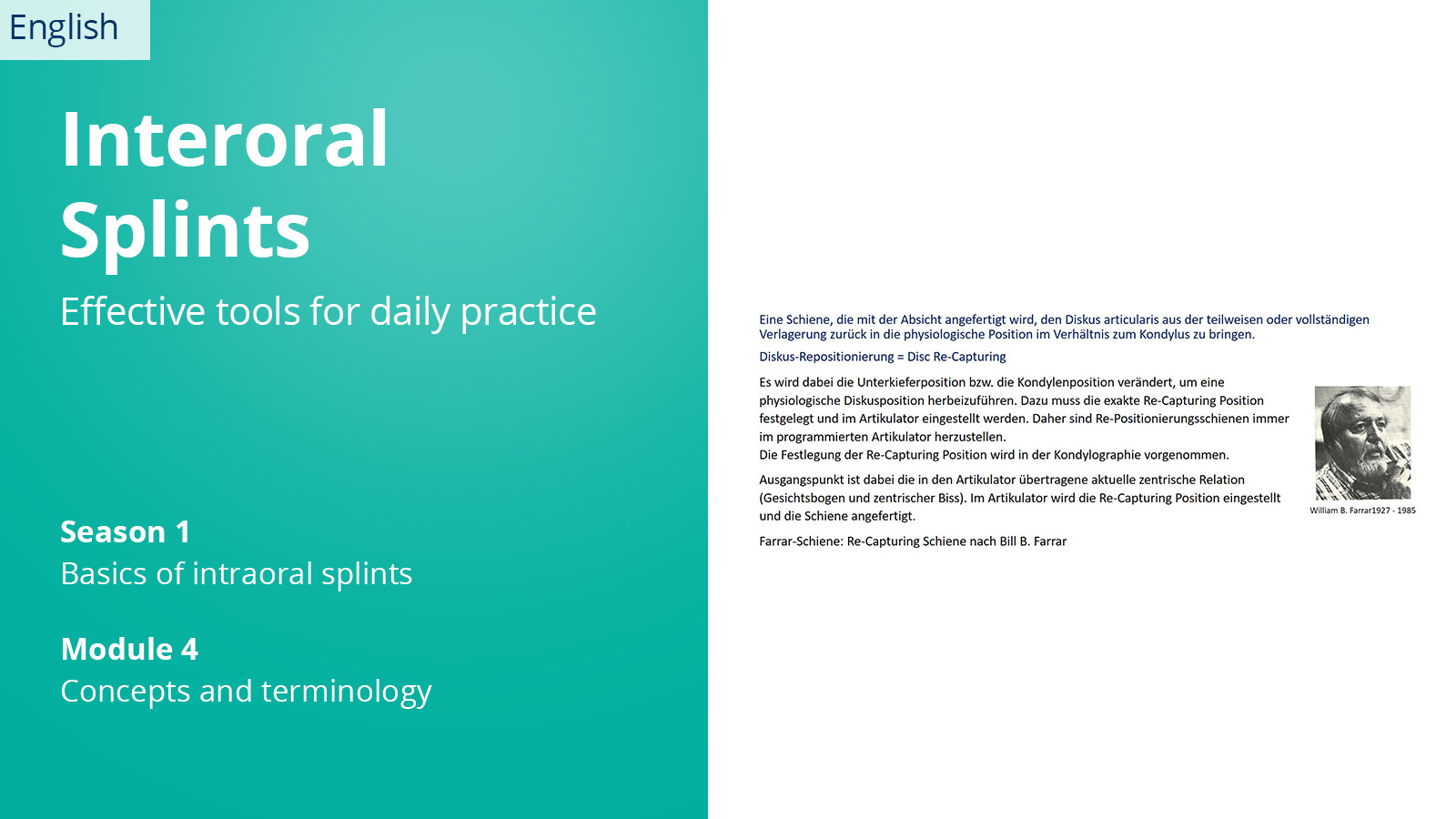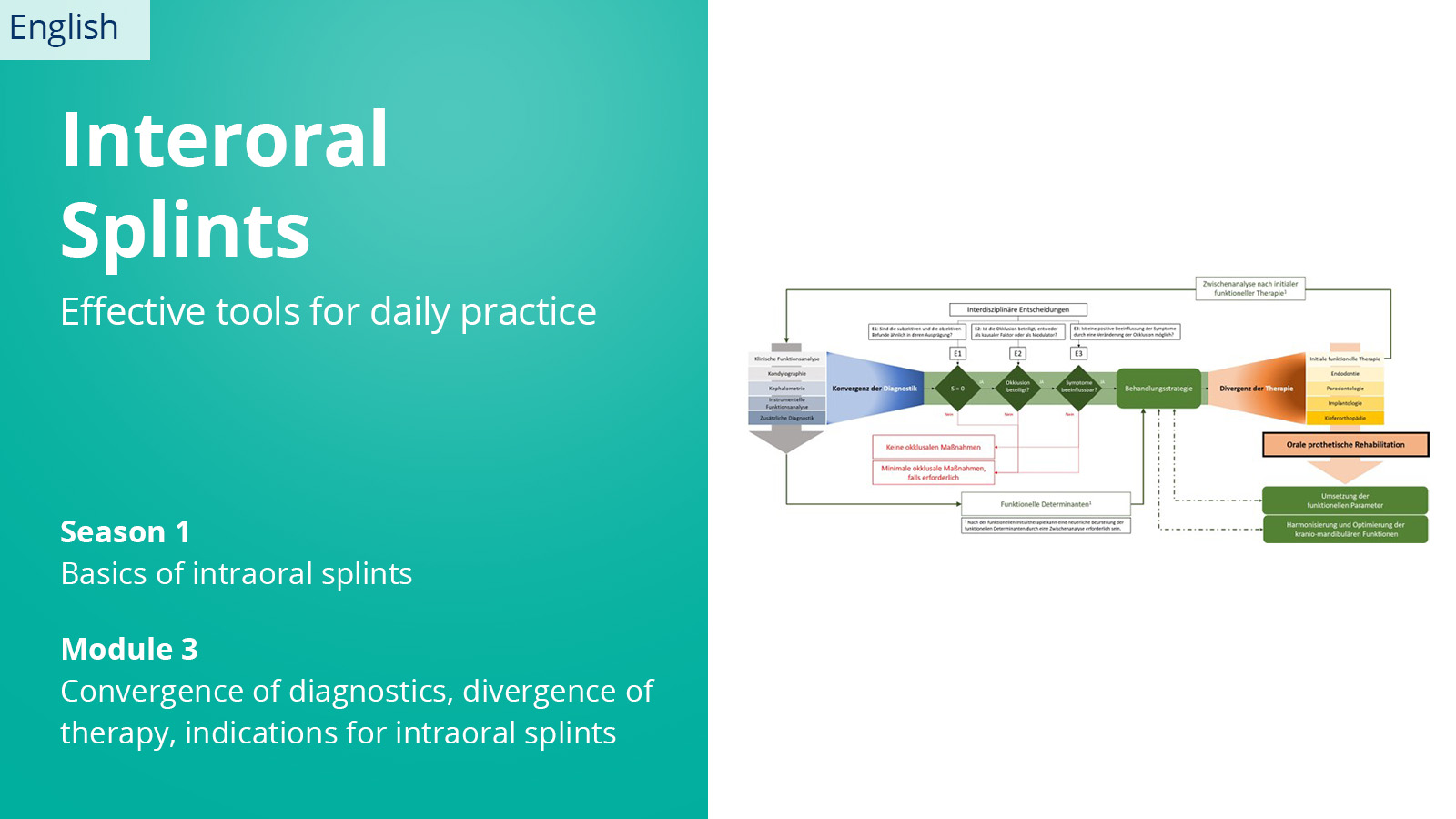
In this module, you will learn how to create a list of problems based on the findings obtained, which serves as the basis for the treatment strategy and the planning of therapy, including follow-up.

In this module, you will learn how to create a list of problems based on the findings obtained, which serves as the basis for the treatment strategy and the planning of therapy, including follow-up.

This module deals with interdisciplinary aspects of occlusion and posture and provides information on the so-called Meersseman test.

How to assess bruxism? In this module, learn what the impact of bruxism can be, how to classify it, and what tools you can use to analyze teeth grinding.

In this module, learn how to perform chewing efficiency analysis, how chewing is related to general health and also to cranio-mandibular dysfunction.

In this module, learn how to perform a neurological screening of the cranial nerves. We also go into the differential diagnosis of CMD.

In this module, we’ll explore the anatomy and physiology of the temporomandibular joint, discuss palpation of the temporomandibular joint, and explain the fascinating properties of the musculature of the craniomandibular system.

Erfahren Sie in diesem Modul, was es mit der Palpation der sogenannten Kaumuskulatur auf sich hat und welche Tragweite objektiven Daten für den Behandlungsplan haben.


In this module, we address the confusing variety of terms used in intraoral splints, sort them into common and more unusual terminology, and go into the relevance of using unambiguous terms and clear interdisciplinary communication.

In this module, we examine whether the occlusion can be identified as a causal factor for the patient’s problems, go into the systematics of the diagnosis and demonstrate how you can create a treatment strategy and carry out the basic planning of the therapy.